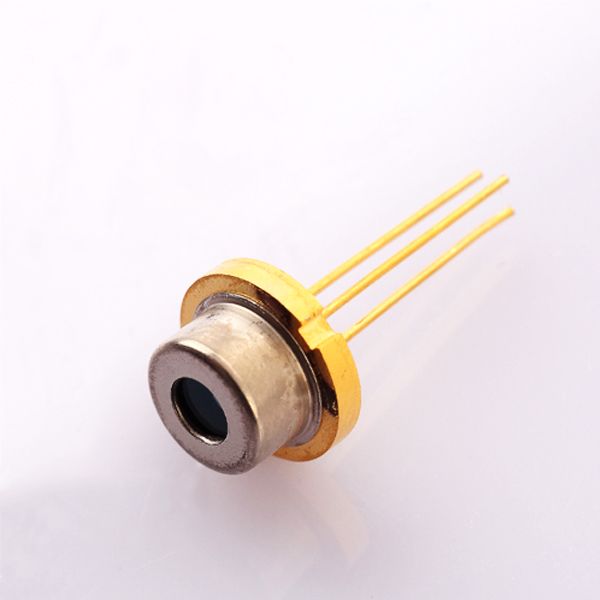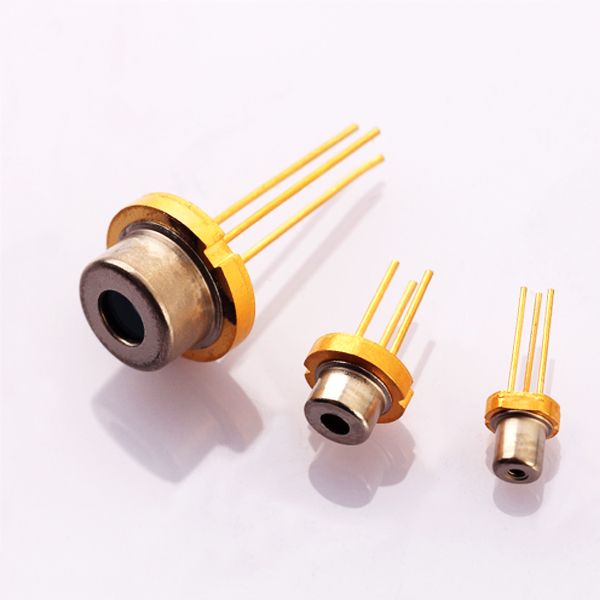660nm single mode laser diode is a semiconductor light emitting device that works based on the principle of electronic transition of semiconductors. A PN junction is formed between the P-type and N-type semiconductor regions of the diode. When a forward voltage is applied to the diode, the electrons in the N region move to the P region, and the holes in the P region move to the N region. Near the PN junction, the electrons and holes recombine, release energy, and radiate in the form of photons, thereby generating red light with a wavelength of 660nm. The single-mode characteristic is achieved by precisely controlling the structural design and manufacturing process of the diode, so that the 660nm red laser diode can only work in a single mode, ensuring that the output laser has good directionality and monochromaticity.

Key features:
High monochromaticity: The central wavelength of SM red laser diode is 660nm, the wavelength width is narrow, usually within a few nanometers, and has excellent monochromaticity. This means that the light it emits has high color purity and can provide accurate red laser light sources in applications that require specific wavelengths of light, such as optical communications, biomedical imaging, and other fields.
Good directivity: The light beam emitted by a 660nm single-mode red laser diode is highly directional and has a small divergence angle, generally within a few milliradians. This allows the red laser light beam to maintain high intensity and focus during long-distance transmission, which is beneficial to improving the transmission efficiency and imaging resolution of optical signals.
Low threshold current: Compared with multimode diodes or other types of lasers, 660nm single-mode red laser diodes usually have a lower threshold current. This means that red laser emission can be achieved at a lower driving current, reducing power consumption, improving energy efficiency, and also helping to extend the service life of the device.
Good stability: It has good power stability and wavelength stability. Within a certain range of working conditions, it can keep the output power and wavelength relatively constant, reducing performance changes caused by environmental factors (such as temperature, current fluctuations, etc.), and is suitable for application scenarios with high requirements for light source stability.
Small size and light weight: The structure of 660nm SM red laser diode is compact, the size is usually small, and the weight is also light, which is easy to integrate into various miniaturized devices and systems, meeting the needs of modern technology for device miniaturization.
Technical data introduction:

Wavelength: 660nm, which is its most important parameter, determines its luminous color and applicability in different applications.
Output power: Generally 660nm SM laser diode gets selected output power within 5mW to 100mW. Different application scenarios have different power requirements. For example, in biomedical imaging, a lower power red laser light source is usually required to avoid damage to biological tissues, while in photodynamic therapy, a suitable higher power needs to be selected according to the treatment needs.
Beam divergence angle: it gets low laser beam divergence angle within 1 and 10 milliradians. A smaller divergence angle means that the red laser beam has better directionality and can maintain high intensity and focusing performance during long-distance transmission.
Working voltage and current: The working voltage is usually around 2-5V, and the working current varies depending on the output power, generally ranging from tens of milliamperes to hundreds of milliamperes.
Application fields:
Optical communication: In optical fiber communication systems, 660nm single-mode laser diodes can be used as light sources for short-distance optical signal transmission. Its high monochromaticity and good directionality can ensure the efficient transmission of optical signals in optical fibers, reduce dispersion and loss, and improve the transmission capacity and distance of communication systems.
Biomedicine:
Photodynamic therapy: Light with a wavelength of 660nm can be absorbed by photosensitizers in human tissues, triggering photochemical reactions and producing active substances such as singlet oxygen, thereby killing cancer cells or diseased cells, and has a certain effect on the treatment of cancer, skin diseases and other diseases.
Bioimaging: As a fluorescent excitation light source, 660nm SM red laser diode is used to excite fluorescent markers in organisms to achieve imaging of biological tissues and cells. Its high monochromaticity and low light damage characteristics help to obtain clear and accurate biological images, providing an important means for biomedical research and clinical diagnosis.
Laser acupuncture: Using the biostimulation effect of 660nm laser to irradiate human acupuncture points, it plays a role in regulating human physiological functions and relieving pain. It is a non-invasive treatment method.
Industrial testing: In industrial production, it can be used for non-destructive testing of materials, surface defect detection, etc. For example, by irradiating the surface of the material, the characteristics of reflected light or scattered light are used to detect defects inside the material or tiny cracks on the surface. Its high resolution and good directionality can improve the accuracy and reliability of detection.
Research field: In scientific research fields such as spectroscopy and optical experiments, 660nm SM red laser diode is used as a standard light source or excitation light source. Its stable output and precise wavelength characteristics provide a reliable light radiation source for scientific research, which is helpful for various optical property research and experimental analysis.
